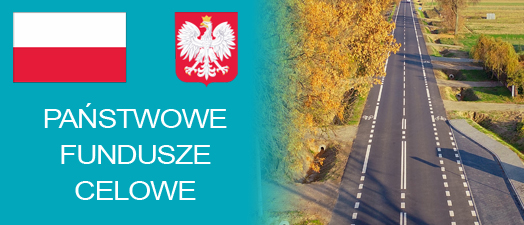Wersja Polska
Historia pałacu - obecnej siedziby władz powiatowych - sięga XVI wieku. W 1543 roku wojewoda lubelski i ruski - Piotr Firlej - na podstawie przywileju lokacyjnego nadanego przez króla Zygmunta I, założył miasto zwane Lewartowem i rozpoczął budowę swojej siedziby - zamku o charakterze obronnym. Po śmierci Mikołaja, syna Piotra Firleja dobra lewartowskie wraz z pałacem przeszły na własność Kazimierskich. W 1643 roku ich właścicielem stał się ks. Władysław Dominik Zasławski, a w 1678 otrzymał je jako spadek ks. Dymitr Jerzy Korybut Wiśniowiecki. Od 1688 roku, po jego śmierci, majątek dostał się Józefowi Lubomirskiemu. W roku 1705 księżna Maria Lubomirska wniosła dobra lewartowskie w posagu Pawłowi Karolowi Sanguszce, który postanowił uczynić z Lewartowa siedzibę rodu i doprowadzić dobra do rozkwitu. Na mocy przywileju króla Augusta III w 1744 roku zmienił nazwę z Lewartowa na Lubartów. Od roku 1839 pałac przestał należeć do rodziny Sanguszków. Kolejnymi jego właścicielami byli: Bank Polski, Stanisław Mycielski, ponownie Bank Polski, Ludwik Grabowski. W 1925 roku pałac wraz z ogrodem kupiło zgromadzenie zakonne Braci Kresowych, z myślą utworzenia tutaj zakonu i szkoły. W roku 1933 pożar zniszczył całe wnętrze i dach budynku. W latach 1935- 38 Zarząd Miejski Lubartowa wykupił ruiny pałacu i ogród. W okresie okupacji nastąpiła dalsza degradacja obiektu. Dopiero od roku 1947 przystąpiono do remontu całego kompleksu. Prace trwały aż do roku 1970. W tym okresie odbudowano pałac i dokonano rekonstrukcji parku według projektu Gerarda Ciołka. Od początku lat sześćdziesiątych ubiegłego wieku pałac stał się siedzibą władz administracyjnych, a od 1999 roku - siedzibą władz powiatu lubartowskiego. Stan techniczny wymagał przeprowadzenia kompleksowego remontu. W miarę możliwości i posiadanych środków wykonywane były kolejne prace. Szczególnym miejscem w pałacu jest obecnie Sala Rycerska, która po przeprowadzeniu prac renowacyjnych i zakupieniu stylowego wyposażenia odzyskała swój dawny blask.
English Version
The History of the Sanguszkos Palace – the seat of Lubartów Poviat
The history of the palace which is currently the seat of Poviat authorities, goes back to the 16th century. In 1543 on the basis of a location privilege granted by king Zygmunt I (Sigismundus I) Piotr Firlej, Lublin and Ruthenian Voivode, (governor and military commander of the province) founded a town bearing the name of Lewartów and embarked on the construction of a defensive castle which was to serve as his seat. Following the death of Piotr Firlej`s son Mikołaj the ownership of the Lewartów estates along with the castle was transferred to the Kazimierskis family. From 1643 the estates were owned by Prince Władysław Dominik Zasławski, and in 1678 they were inherited by Prince Dymitr Jerzy Korybut Wiśniowiecki. After his death, from 1688 the ownership of the estate remained in the hands of Józef Lubomirski. In 1705 the Lewartów estates were brought as the dowry by Princess Maria Lubomirska to Paweł Karol Sanguszko who then decided to make Lewartów his family seat and bring prosperity and development to the estates. In 1744, by virtue of the charter confirmed by king August III, he changed the town’s name from Lewartów to Lubartów. As of 1839 the palace ceased to be the property of the Sanguszko family. Its successive owners were: the Bank of Poland, Stanisław Mycielski, the Bank of Poland again, Ludwik Grabowski. In 1925 the palace with its garden was bought by the religious congregation of Brothers from the Borderlands who chose the place with an intention of setting up a monastery and a school. In 1933 the entire interior of the building as well as the roof were gutted by fire. Between 1935 - 1938 the Municipal Governing Body of Lubartów bought out the palace ruins and the garden. The Nazi occupation saw further decline of the building. It was only as late as 1947 that the renovation work was started on the whole building complex and continued through till 1970. In this period the palace was rebuilt and the garden underwent reconstruction according to the design by Gerard Ciołek. In the sixties of the last century the palace became the seat of administration authorities and since 1999 it has been the seat of the authorities of Lubartow Poviat. The technical condition of the structure called for a massive and complex renovation programme. The work at its consecutive stages was proceeding within available means and financial facilities. The special place in the palace now is occupied by its Knights` Hall which, after the purchase of period furnishings and the completion of reconstruction work, returned to its former splendour.
Deutsch version
Die Geschichte des Palastes - die aktuelle Sitz der Landesdirektion - beginnt im sechzehnten Jahrhundert.
Im Jahre 1705 Prinzessin Mary Lubomirska brachte alle Gute von Lewart als Mitgift für Paweł Karol Sanguszko, der beschloss Lewartow als einen Sitz die für Familie zu machen und alle Gute zur Entfaltung zu bringen.
Auf der Grundlage des Privilegs des Königs August III, im Jahre 1744 änderte er Name von der Lubartów nach Lewartow.
Seit 1839 ist der Palast nicht mehr zur Familie Sanguszko gehören.
Die nächsten Besitzer waren: Polnischen Bank,Stanislaw Mycielski, Polnischen Bank noch einmal und Ludwik Grabowski.
Das Palast mit dem Garten kaufte im Jahre 1925 eine religiöse Gemeinde von Kresy-Brothers, mit Blick auf die Gründung und Schulen hier zu bestellen.
Im Jahr 1933 zerstörte ein Feuer den ganzen Innenraum und das Dach des Gebäudes. In den Jahren von 1935 bis 1938 kaufte Ruinen des Palastes Lubartow und Garten eine Stadtverwaltung.
Während der Besatzung gab es eine weitere Verschlechterung der Sache.
Erst seit 1947, begann die Renovierung des ganzes Komplex.
Die Arbeiten dauerten bis 1970.
Während dieser Zeit wurde das Palast umgebaut und einen Park von Gerard Ciolek entworfen.
Seit Anfang der sechziger Jahre des letzten Jahrhunderts wurde der Palast den Sitz der Verwaltung von der Stadt und seit 1999 - auch den Sitz von Landesdirektion.
Technischer Zustand erfordert eine umfassende Überholung.
Besonderen Platz in der Palast ist heute der Rittersaal.








